Semantic keywords: Definition, Examples & How to find them
- Somayeh Niya
- March 20, 2024
SEO has become complicated in recent years. Old strategies like keyword stuffing not only don’t work but also lead to penalization. Google bots are smarter now. They know what users are searching for, even if they don’t type the exact keywords. You can take advantage of this feature to increase the keyword ranking.
In this article, I’m going to discuss semantic keywords and how you can boost your ranking with these semantic keyword research.
What are semantic keywords?
Semantic keywords, or Latent semantic indexing (LSI), are those words or terms that conceptually relate to the main keyword. So, they are not the primary keywords. They surrounded the main keywords naturally to help search engines find the webpage.
For example:
You want to write an article about ” Pregnancy care”. Your primary keyword can be short or long-tail keywords. The semantic keywords for this article are words such as prenatal tests, baby growth, healthy eating, prenatal care, ultrasound, maternity care, etc.
It means semantic keywords are phrases that come up when discussing your main topic.
So, can semantic keywords be synonyms of the main keyword?
No. Semantic keywords go beyond synonyms of the main keyword, or similar words or phrases. However, it’s a good idea to use synonyms of the main keyword because it prevents keyword stuffing in your content.
Does semantic keywords matter in SEO?
Definitely yes.
LSI keywords help search engine bots find your content better. In previous Google algorithms, Google focused on existing keyword-match in search engine results. After the Panda update, it changed the focus on topical relevancy. So, existing semantic keywords in a web page are signs of the relevancy of that page to the query.
For example:
When a user wants to know about ”how to cook squash”, the search engine knows this is an informational query about squash vegetables, not squash sport. Consequently, search engine bots search for semantically related keywords like oil, oven, bake, roast, cooking, and so on.
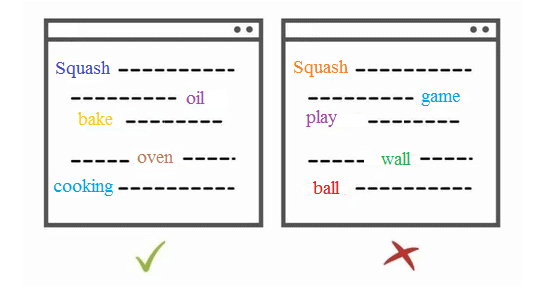
Not only for homonyms queries, also is the same for all types of queries. As soon as search engines know search intent, they search for semantic keywords in the pages. So, by including semantic keywords in your content help to boost your ranking.
Benefits of Using semantic keywords
Using semantic keywords has several benefits for SEO. You can’t improve the SEO of your page without using proper semantic keywords. Pay attention to the below advantages to know more about the importance of relevant keywords.
Improve organic traffic
When users type a query in search engines, always like to receive large information about it. This includes hidden aspects of that query.
For example:
If someone searches for a ”fast breakfast idea”, it means other aspects of the idea are essential for that person.
So, in addition to common semantic keywords like grab-and-go breakfast, recipes, eggs, or granola, you should add other relevant keywords like healthy breakfast, nutritious breakfast, and delicious breakfast.
Adding this hidden side of a query not only improves your organic traffic but also helps to outrank your competitors. Because these are relevant semantic keywords for search engines.
Decrease bounce rate
When you use relevant keywords in your content, you will reduce the danger of entering the wrong user into your webpage.
For example:
If you have an article about Windows Home Design, by using semantically related keywords like bedroom, kitchen, aluminum, and iron you will help Google to understand this page is about house design, not windows home design software. So, it reduces the bounce rate.
Increase sale
If you own a website for selling products using LSI keywords can increase your sales. Because semantic keywords help to create a better search experience for buyers.
Visibility on SERPs
If you pay attention to all the basics of SEO along with LSI keywords, it boosts your visibility on search engine results.
Pay attention to below image:
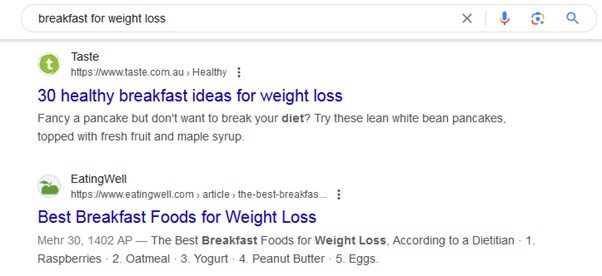
Diet is a related keyword for this query. In the first webpage, it appears on search engine results.
Limit Google penalties
By using semantic keywords you will reduce the danger of Google penalty due to keyword stuffing. There is a limitation for using the primary keyword in the content, but semantic keywords make up this limitation and boost the chance of finding your webpage on search engine results.
How to find semantic keywords?
semantically related keywords come naturally in your content when you write about a topic. But if you want to improve SEO, you need to extra ways to grab more relevant keywords. Otherwise, your chance will reduce if you don’t use sufficient semantic keywords.
Google Autocomplete
Like always Google search is the best tool to overcome SEO difficulties.
For example, I want to add semantic keywords to my current article. The main keyword is ”semantic keywords”:
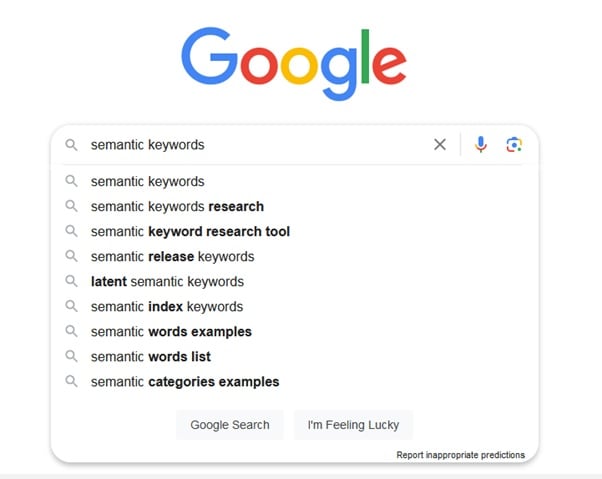
In Google suggestions beside the main keyword, the bold words or phrases are related semantic keywords. You can use them in your content.

When you are using Google autocomplete for SEO, it’s better to use browser in incognito mode. Because your previous search and local search in your area don’t affect the results.
Google image tag suggestion
Every search on Google has a particular part for images. It includes images of every ranked page.
After typing your main keyword on Google, go to the images section.

You can see words like puppy, kibble and bowl beside images at the top of search results. These are semantic keywords.

Scroll to the right to see more semantically related keywords.
The image result page also has related searches too. Click on one of the images and in the right-hand panel the image will be loaded. Then scroll down to see related searches for that particular image.
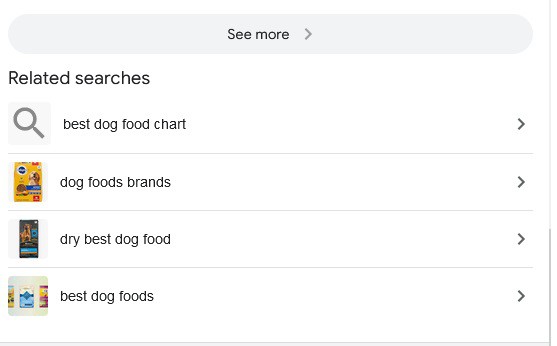
You can do it for any particular image to see relevant keywords.

If you use this technique for every particular image, be careful that keywords relate to your topic.
SEO tools
Some SEO tools have specific features for finding LSI keywords.
- Google Keyword Planner
- Semrush
- Serpstat
- Ahrefs
- Moz
In addition to a list of related keywords that people search the entire web for based on the topic, these SEO tools allow you to filter words by connection strength, search volume, and more.
Semantic keywords tool
LSI Graph is a dedicated tool that largely is focused on semantic keywords. Just enter your primary keyword. Once you’ve received a list of related keywords, you incorporate them into your content.
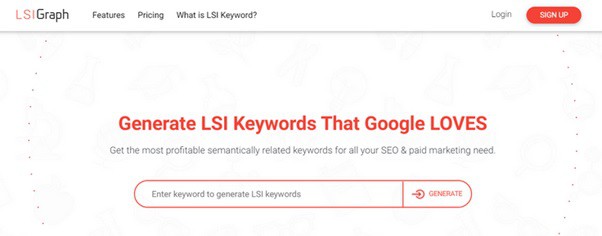
People also ask
This website uses Google’s People Also Ask results in SERPs to generate related questions. Maybe you think these questions mostly are suitable for the FAQ section.
Yes, it’s true.
But these questions contain related keywords to your topic.
Although this website has paid plans, it offers free searches for every user daily.
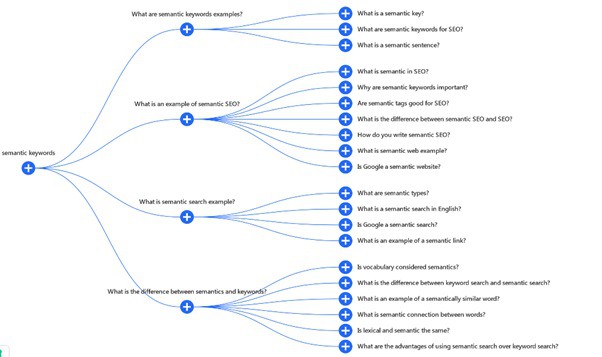
Google Related Searches
Related Searches is a great feature of Google to find semantic keywords. It appears at the bottom of the first page in search results.
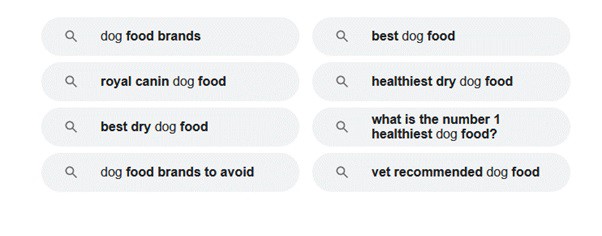
In the above image, you notice bold words or phrases near the primary keyword. By using these secondary keywords you can improve your content for ranking. Add the bolded word to your LSI keywords list.
Analyze competitor websites
Look at the content on websites that rank well for your target keywords. This not only gives you an idea of what topics are relevant to your industry but also helps you identify the semantic keywords they are using. By exploring ways to incorporate similar keywords into your content, you can align your website with the same search intent that drives traffic to your competitors.
Leverage social media and online communities
Monitor discussions and conversations related to your topic on social media platforms and online communities. Pay attention to the words and phrases people use when discussing the subject, as these can serve as valuable semantic keywords. By understanding the language your target audience uses, you can tailor your content to resonate with them and improve your website’s visibility.
How to incorporate semantic keywords in content?
Semantic keywords can appear in every part of content naturally such as sub-headings and body of the content. You can use them in the first paragraph or as anchor text in the body of the content.
Internal links are another way to use semantic keywords. Not only help to structure your website, but also search engines understand the relationships between your different pages.
But some parts of your content are more significant because search bots first skim these parts: It includes:
- Title tags
- Meta description
- Image or attachment file names
- Header tags
- Image alt tags
- Captions under images
By naturally incorporating these relevant keywords throughout your content, you help Google’s algorithms understand the content of your page.
Conclusion
Semantically related keywords play important role in modern SEO. By incorporating them into your content, you can improve your website’s visibility, relevance, and overall user experience. So, next time you optimize your content, remember to think beyond exact keyword matches and embrace the power of semantic keywords.
